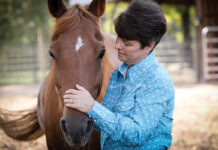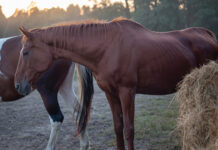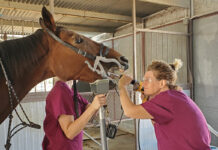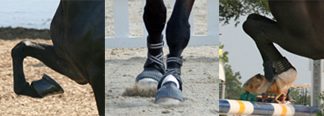It’s estimated that 17 percent of horses in this country are over 20 years old. Today, the average horse in the United States can expect a longer, healthier life than his ancestors. There are multiple reasons for this increased longevity. Even just a century ago, most horses were used for hard work, not pleasure. Earlier equines also didn’t have the benefit of improved nutrition and advances in veterinary medicine—including parasite control and expanded protection from disease via vaccination—that horses enjoy today. Read on to learn more about senior and old horse health care and wellness.
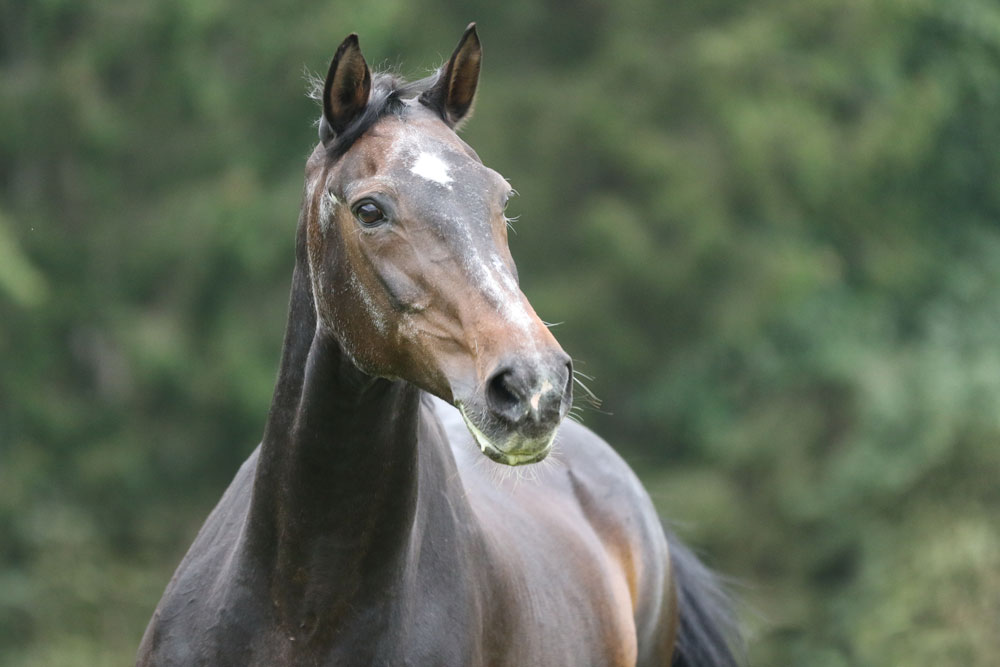
“Consistency is the main thing as your horse ages,” says Sam Crosby, DVM, whose equine practice is based in Arcadia, Okla. “An annual exam is important so you can catch issues. You also want to pay close attention to an older horse’s body condition.”
Old Horse Health Care Concerns
Also known as Cushing’s disease, pituitary pars intermedia dysfunction (PPID) is a chronic, progressive disease of the endocrine system that is more common in older horses. A characteristic sign is a long, shaggy coat that doesn’t shed out in the spring like winter hair. Other signs include excessive thirst, frequent urination, weight loss and muscle wasting. Laminitis occurs frequently in PPID horses, and blood tests may also show elevated glucose levels.
“There’s not really a way to predict if a horse will develop PPID, so be observant,” says Crosby. “If your horse starts showing any of the symptoms, call your vet promptly for treatment. Because PPID predisposes a horse to laminitis, you don’t want to ignore symptoms. Treatment with the drug pergolide really can help, but it’s a management issue, not a cure.”
For a horse with PPID, you’ll want to be aware of the non-structural carbohydrate (NSC) value of any grain ration you’re feeding.
“This value is not printed on the feed label—you’ll generally have to call the feed company to obtain the number,” says Lisa Kivett, DVM, MS, DACVIM, whose Foundation Equine Clinic is based in Southern Pines, N.C. “If your horse has PPID, equine metabolic syndrome, or has had laminitis in the past, lower NSC is better. In general, I like a value less than 12 to 13 percent.”
Insulin dysregulation, also known as equine metabolic syndrome (EMS), occurs when the body is unable to respond properly to insulin. Affected horses tend to be easy keepers and overweight, often with a history of obesity their entire lives. Common signs include a cresty neck, noticeable fat deposits, and laminitis. Some horses have both PPID and EMS.
As with PPID, there is no cure for EMS, only management of symptoms.
Respiratory issues can also be a problem in older horses. Often called “heaves,” recurrent airway obstruction (RAO) is the result of an allergic reaction to inhaled particles. If not successfully treated, the disease, which was formerly known as chronic obstructive pulmonary disease (COPD), can progress over time to the point that the lung tissue suffers permanent loss of function, hence the “heaving” effort of the horse’s breathing.
Corticosteroids and bronchodilators are the drugs of choice for managing chronic airway conditions like RAO, but environmental management is crucial in order to improve the air quality where the horse is stabled and to reduce exposure to allergens.
Older horses can also be more vulnerable to certain types of colic.
“Some causes, such as small, fatty tumors that wrap around sections of intestine, aren’t in any way preventable,” says Kivett. “Others, like impactions from reduced ability to grind feed due to dental disease, may be prevented. Good dietary management is as critical, or more critical, for older horses as it is for their younger counterparts.” To help avoid impaction colic, Kivett recommends adding some electrolytes to a horse’s feed. “Electrolytes can help keep the horse hydrated in hot weather when he’s sweating,” she says. “They also encourage drinking in cold weather when horses might otherwise reduce their intake.”
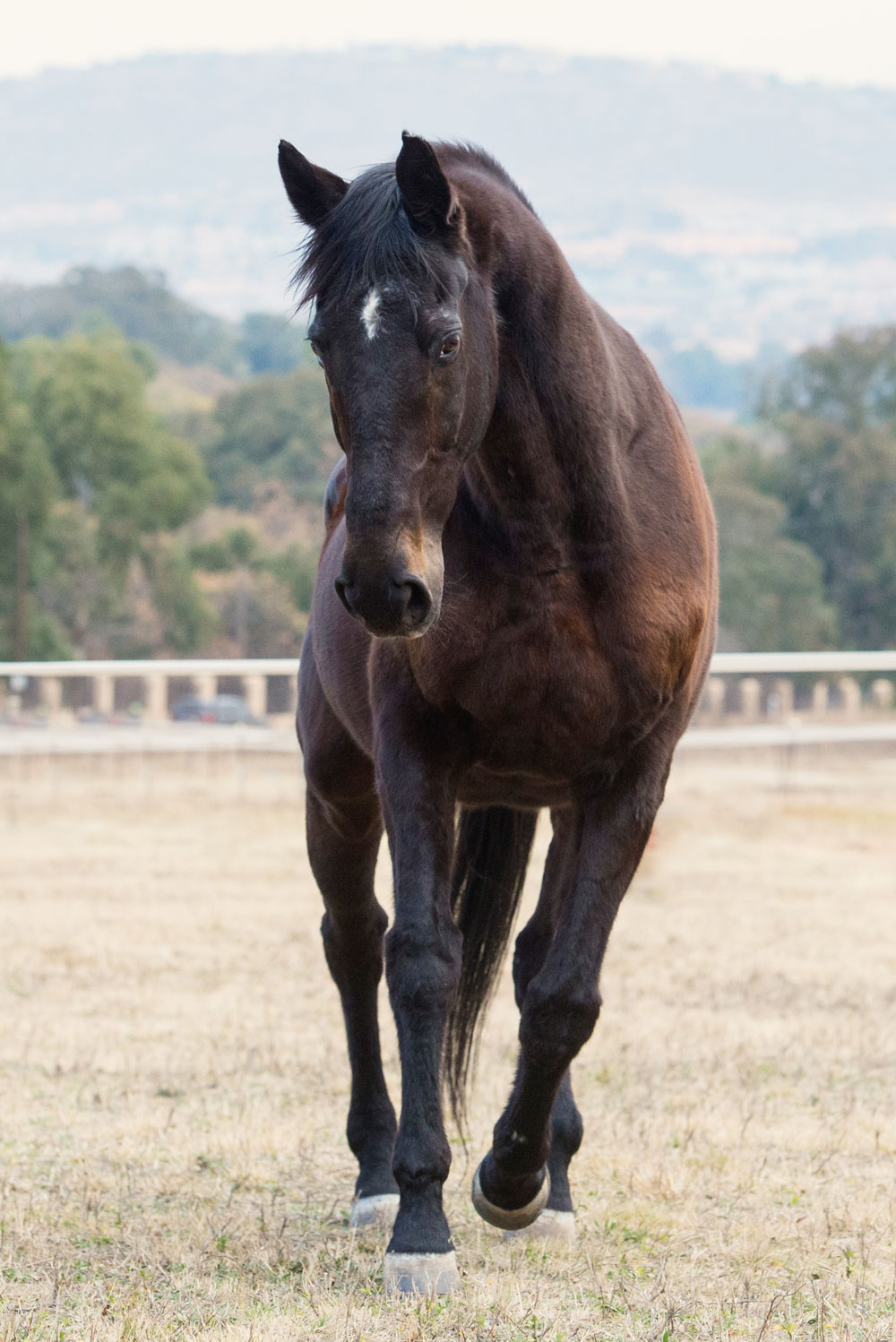
Old Horse Health Care: Soundness
Older horses have this in common with older people: the less they move around, the less mobile they become.
“Many people with geriatric horses just want to turn them out, but continued exercise in a tolerable form will help the horse stay mobile and flexible,” says Crosby. “Even going for an easy walking ride is better than just standing in a corral or pasture.”
Of course, a horse with a debilitating condition may need to be retired from any kind of use. This should be determined on an individual basis, not when a horse reaches a certain age. Discuss concerns with your veterinarian, who can help determine if your horse is no longer comfortable being ridden.
Crosby finds that nutritional joint supplements and joint injections can be helpful in extending a horse’s mobility and soundness into his later years.
“In my practice, I see many horses in their late teens and 20s that are still really active,” he says. “Many of my geriatric patients are ‘cream of the crop’ horses that can no longer keep up in the professional ranks, but some are still used for [youth rider events] into their late 20s.”
Even horses with a degree of osteoarthritis (OA) can continue to be ridden, provided they are managed well. Crosby notes that you may have to try several options before finding a management program of joint injections and a joint supplement that’s most effective for your particular horse. Your veterinarian will help you come up with a plan targeted to your individual horse’s needs.
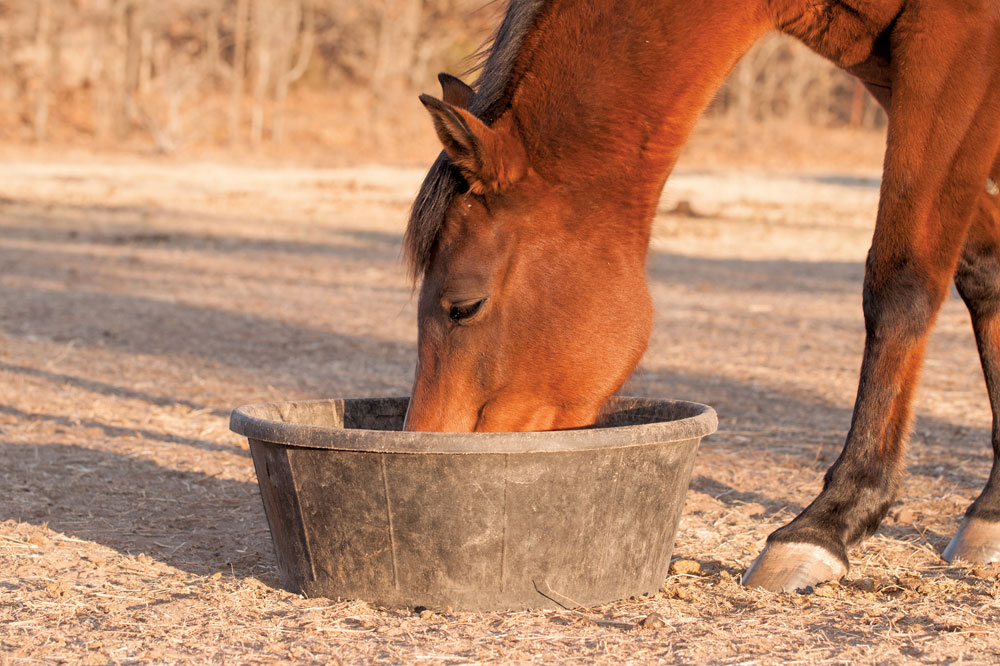
Old Horse Health Care: Senior Horse Nutrition
Throughout his life, your horse’s nutrition program should be based on what’s best for him as an individual. This is even more important as he ages, so don’t hesitate to talk with your veterinarian and equine dental care provider about your particular horse’s needs.
“It’s important to remember that each horse is an individual. When formulating a diet for a senior horse, the first thing to consider is whether he has any medical issues (PPID, EMS, et cetera) that might change his nutritional needs,” says Kivett.
“Some older horses may have a decreased ability to absorb protein and other nutrients like phosphorous,” she adds. “As a general recommendation, I prefer grains with 10 to 15 percent protein, 5 to 12 percent fat, 15 to 18 percent fiber, added vitamin E, and potentially vitamin C.”
Many people don’t realize that you need to feed at least the minimum recommended amount (this is printed on the bag/label) in order for the horse to receive the correct balance of nutrients, vitamins and minerals. This holds true whether you’re feeding a complete “senior” feed or other type of grain ration.
If you have an easy keeper that tends to gain weight, even the minimum recommended amount may be too much. For those horses, a ration balancer may be a good choice, as these feeds are formulated to be fed in much smaller quantities (typically 1 to 2 pounds per day), but still provide the necessary vitamins and minerals.
Quality forage should form the basis for your horse’s nutritional program, no matter his age, but this can present a challenge since many old horses outlive their teeth.
“Once a horse no longer has sufficient tooth surface to grind hay, we have to find another source of calories and fiber to keep him healthy,” says Kivett. “This is most easily accomplished with commercial senior feeds. These feeds are formulated as a complete diet, meaning they meet all the horse’s nutritional needs, and have forage added as a hay replacement.” They’re also easy for the horse to chew, digest and absorb.
Since a horse must eat at least 1 to 2 percent of his body weight daily, this means the average horse needs about 12 to 25 pounds of a commercial complete feed daily to meet his needs.
“Many horse owners are shocked by the amount, but when we consider that this is replacing all the hay they eat, it doesn’t seem so far-fetched,” says Kivett. “It’s important to keep in mind that this can only be safely done with complete senior feeds. Other grains are not designed to be fed this way, and would result in health problems if fed in these quantities.”
Other forage replacement options include chopped, bagged forage; hay pellets; and hay cubes. Soaking cubes or pellets to form a mash works well for a senior that can’t chew hay.
“No matter which option is chosen, it’s still critical that the horse receives 1 to 2 percent of his body weight per day,” says Kivett. “This is measured dry, before any water is added.”
Be careful not to feed an older horse in an environment where he has to compete for food. Separate him at feeding time so he can eat at his own pace and not fret over other horses trying to steal his food. This will also allow you to monitor his consumption and notice if he’s not cleaning up or has trouble eating.
Old Horse Health Care: Dental Details
Some owners mistakenly think an old horse with worn-down or missing teeth doesn’t need dental care.
“It’s pretty rare to see an older horse with absolutely no teeth and no risk of periodontal disease,” says Kivett. “While older horses are less likely to need a float, they are more likely to have periodontal disease and other painful oral conditions that require treatment.
“Dental abnormalities and periodontal disease are very common in older horses,” she adds. “I routinely see horses with periodontal pockets, infected spaces (diastemata) between the teeth, cavities, broken teeth, and large overgrowths of teeth. Incisor disease becomes more common in older horses as well. We are recognizing more cases of a very painful incisor disease called equine odontoclastic tooth resorption and hypercementosis (EOTRH), particularly in aged geldings. This causes the tooth roots to become diseased and the front teeth to become unstable, infected and painful.”
Kivett finds dental problems are more common in older horses that received inconsistent dental care when they were younger. Most horses need a complete dental examination once yearly. Some horses with dental problems or periodontal disease require more frequent exams, at least until the problems are under control.
Horse to Human Age Comparison
For about the first three years of life, a horse ages approximately 6½ years for every human year, so a 1-year-old horse is about the equivalent of a 6- to 7-year-old child, and a 3-year-old horse is roughly comparable an 18-year-old human.
After the first three to four years, aging slows in comparison. A 10-year-old horse is similar to a 35-year-old person, while a 20-year-old horse is about the same as a 60-year-old person. A horse that makes it to the ripe old age of 36 would be comparable to a 100-year-old human.
Remember the Basics
If you have a healthy senior horse, good management helped him get to that point, so don’t neglect it just because he’s older and less active.
This includes regular visits by a hoof care professional, annual veterinary examinations and routine vaccinations, regular dental visits, and a deworming program created with your veterinarian that includes fecal exams and is based on your horse’s risk, exposure, and region of the country.
This article originally appeared in the November 2018 issue of Horse Illustrated magazine. Click here to subscribe!

